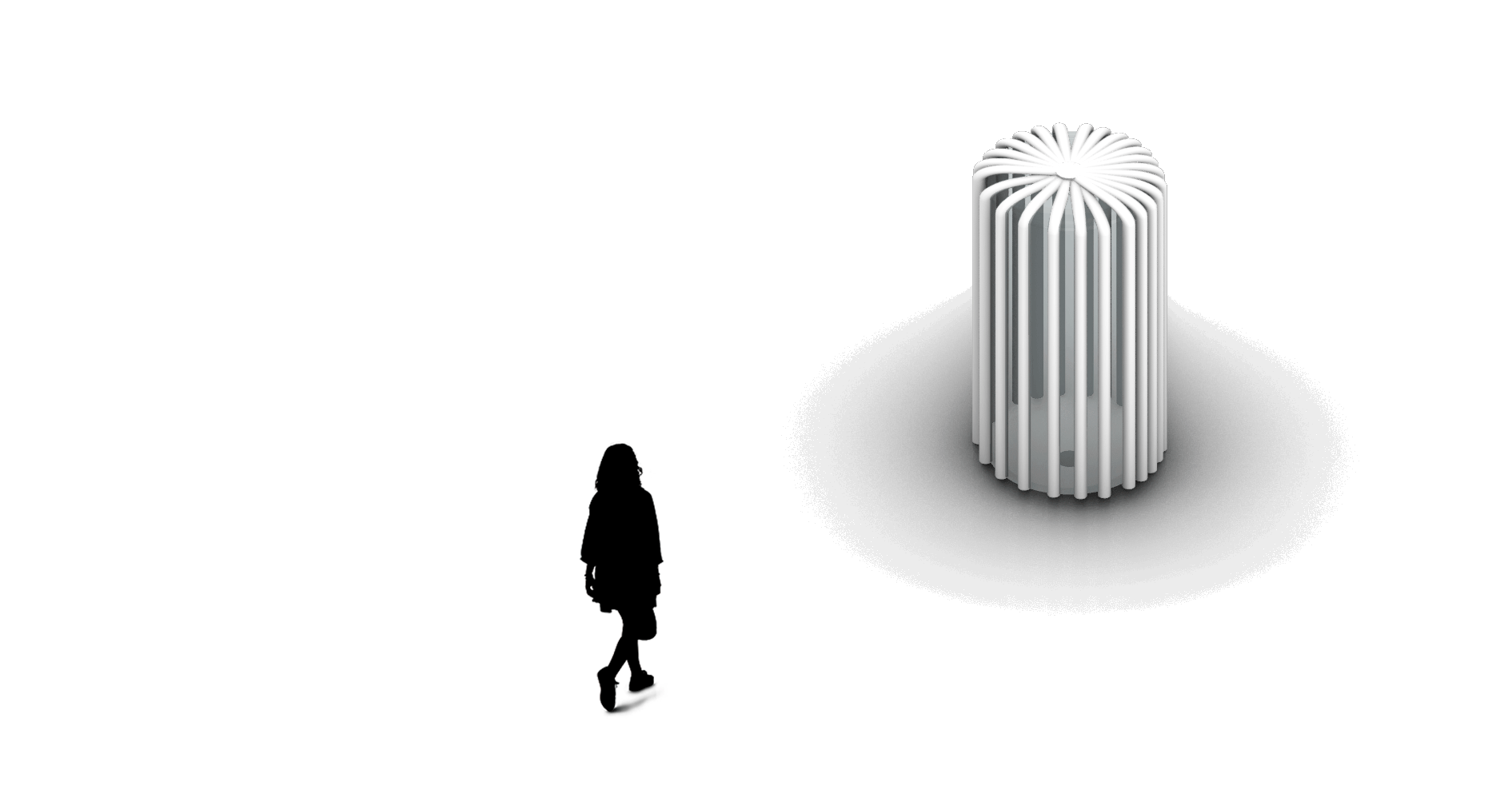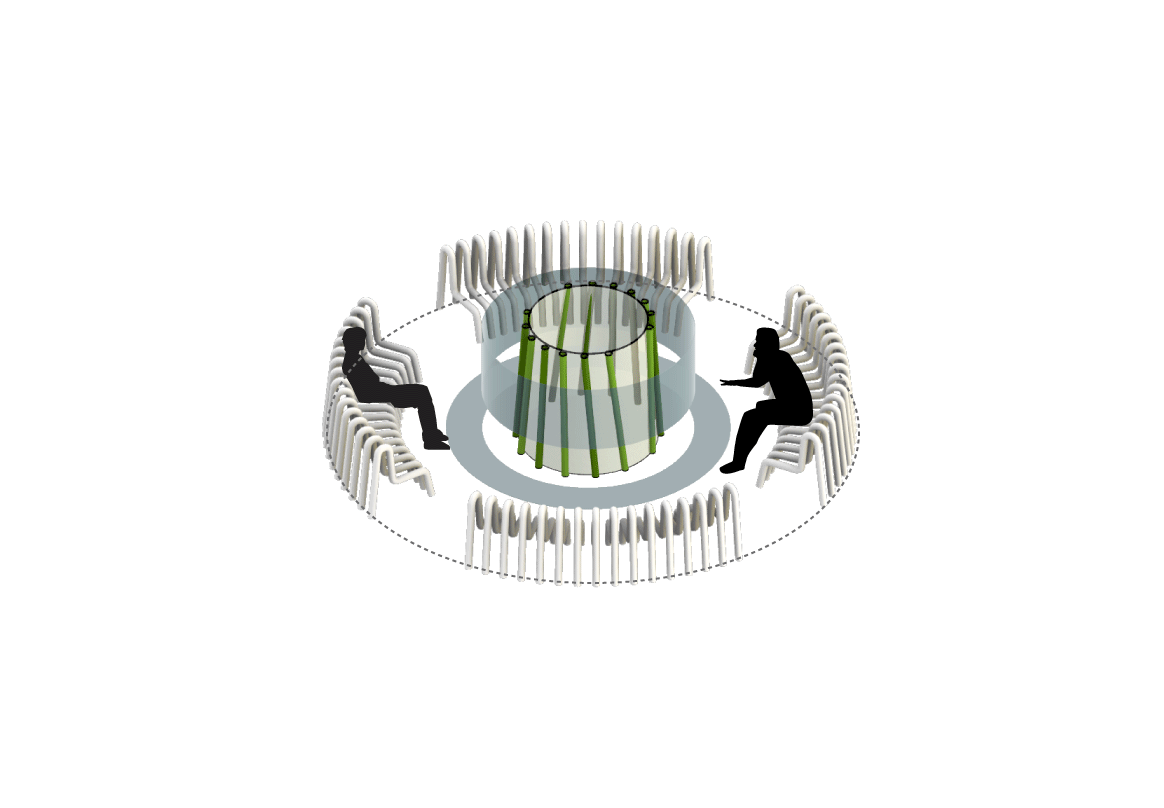algae loop | looking into the future of workspace in a climate change scenario
MASTER PROJECT. Project developed during the introductory studio of the Master in Advanced Architecture at IAAC (Institute of Advanced Architecture of Catalonia) FULL SCHOLARSHIP
GOAL. To envision the future of the HEURA FOODS workspace, considering existing technologies and climate change scenarios and using Barcelona’s historical building as a site for intervention. HEURA FOODS was founded in 2017 by Marc and Bernan in a co-working office in the center of Barcelona. It was created with a social mission-turned-business that would empower people to change the current food system to a more sustainable, healthy, and nutritious one. They call themselves the successor of meat. The challenge of this project is to envision how will a company like this operate in the future. TINGLADOS BUILDING is a 1920s construction in the harbor of the Barceloneta neighborhood. It was chosen as the scenario of the project due to its historical value, proximity to the sea, and potential liability to climate change circumstances.




The site

Context landmarks, nodes and axis. The recognition of the building as a cul-de-sac in the city

New connections and floating islands.

The site
SEA LEVEL RISE is a process that will continue to intensify in the next years. Due to the rising temperature of the planet, the defrosting of glaciers will affect the coastal areas. This project uses it as an opportunity to envision the future of a specific area of Barcelona at a 1m rising sea in the year 2065. Envisioning the future of the company involves imagining not only the scenario but also the products that the company will commercialize and when we combine climate change + the future of food the workspace of the future is ALGAE. Algae has high nutritional values, is the biggest source of protein found in nature, and does not require land for production. It also has the highest level of carbon sequestration, it is the element that will certainly be present in heura’s future.
FLOATING ISLANDS. is a system that has been effective in many flooded regions as a resilient agriculture method as well as landscape and leisure spaces. It is a strategy that can be accommodated to different scenarios of sea level, maintaining useful areas and also reducing the wave tidal energy. This method was chosen to be applied in the project area in order to reduce the effects of the sea level rise and to create areas for production and research for heura foods products. Different systems of islands were created and the structure is bio rock based. GROWING SYSTEM the islands were thought to be a growing system, as the company grows and the sea level continues to rise the islands will grow along always mixing different types of ambiances.





floating decks
leisure pools
microalgae farms
macroalgae farms
natural habitat

receiving points (connections with city)

scenario 01

project scenario

receiving points (connections with city)
ARCHITECTURAL INTERVENTION. The intervention in the building aims to evoke its historical value and uses it as a research center for heura as well as a community space to bring awareness to environmental issues, and social justice. The new building is itself a lab for heura, as it works as a photobioreactor that produces biomass for heuras products and biofuel to power the building.



Current building

Removing extra structures and making the reading of the building more clear

finished intervention

Current building

Envisioning that in the future humans will be responsible for mainly the creative work of Heura Foods, since the floating farms will be automated, and robots and AI will be responsible for harvesting and monitoring the right levels for production. The workspace itself is an experience. The INTERIOR space will consist in meeting pods that can adjust the ambiance to the user's needs and can connect people in person like.
The building itself works as a photobioreactor, where microalgae flows in between glass tubes while receiving sunlight. Below the building there is a degasser tank, in this tank the algae mixture loses the 02 to the atmosphere, increasing the air quality of its surroundings, and also pumps the mixture back into the glass tube. The whole process happens in a loop, where the degasser gives the mixture to the glass tubes, the glass tubes then receive the sunlight as it passes throughout the whole facade, then it comes back to the degasser tank, loses 02, and then is directed to the biomass and biofuel tanks. The biomass is further used for the heura products and the biofuel as energy for the building.

WORK PODS the environment pods have a sensor of presence that recognize when the person is close to it and could be able to change the climate and the environment inside the pod for the workers; Techs used: Real-time location sensors occupancy sensors AI Human comfort tracking (light, temperature, and humidity) Pods Isolated environment where you’ll be able to collect your thoughts and recharge yourself for the day ahead.
COLLECTIVE MEETINGS for the meeting room design the proposal is a rail to arrange the benches in different ways according to the necessity: Techs used: Metaverse glasses The perspective of accessing the metaverse has given the makers of virtual, augmented, and mixed reality. Google mesh transfers the user to a mixed reality state where people meet and share experiences. Offices could house pods or meeting rooms to use this technology for remote meetings that require physical interaction

LABS have algae smart tubes that control the levels of the photobioreactor; techs used: Sensor-based smart tubes which can sense the fluids and analyze the data and monitors the levels of the mixtures.

CO-CREATORS: Rafaela Muller, Vishesh Narola; FACULTY: Carmello Zapulla and Sebastian Amorelli
Yasmin Jaskulski
architecture portfolio